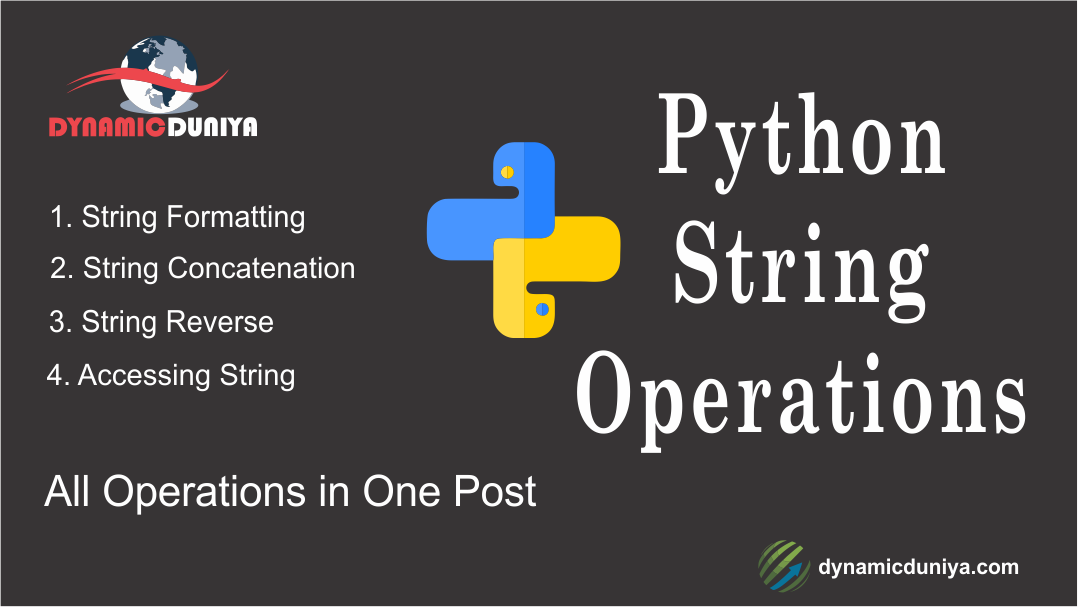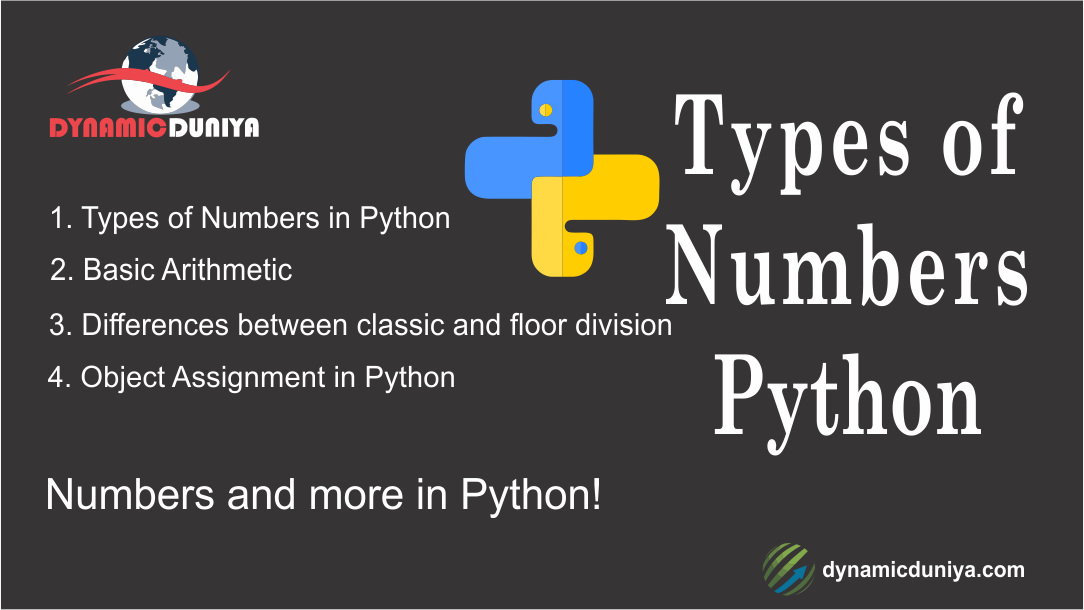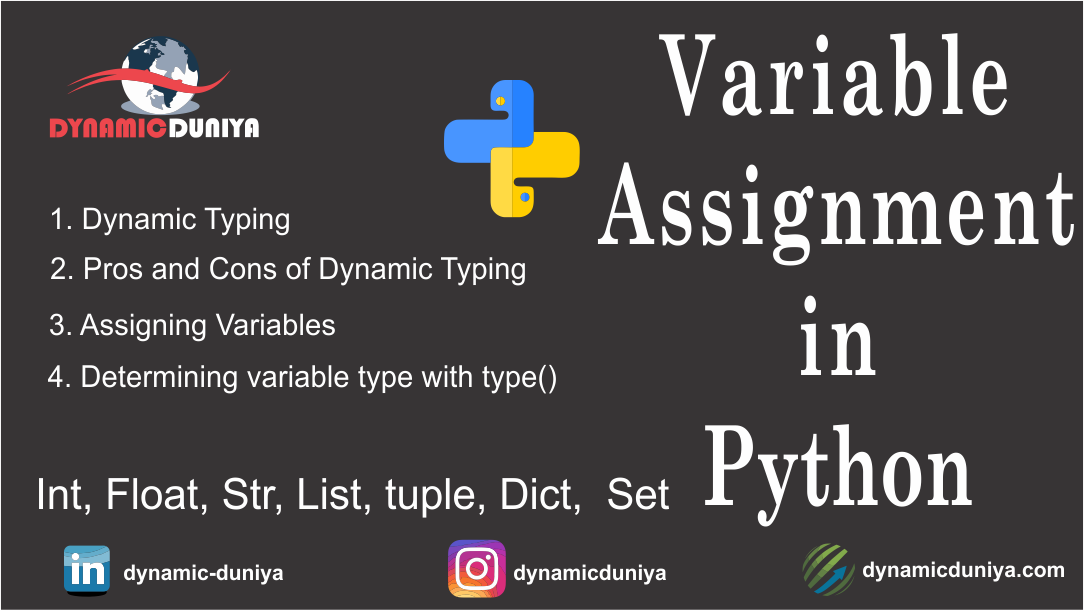String Operations in Python

Strings are used in Python to record text information, such as names. Strings in Python are actually a sequence, which basically means Python keeps track of every element in the string as a sequence. For example, Python understands the string "hello' to be a sequence of letters in a specific order. This means we will be able to use indexing to grab particular letters (like the first letter, or the last letter).
In this post we'll learn about the following:
- Creating Strings
- Printing Strings
- String Indexing and Slicing
- String Properties
- String Methods
- Print Formatting
# Single word
"Hello"
# Entire phrase
'This is also a string'
# We can also use double quote
"String built with double quotes"
# Be careful with quotes!
' I'm using single quotes, but this will create an error' #SyntaxError: invalid syntax
The reason for the error above is because the single quote in I'm stopped the string. You can use combinations of double and single quotes to get the complete statement.
"Now I'm ready to use the single quotes inside a string!"
Now let's learn about printing strings!
Printing a String
Using Jupyter notebook with just a string in a cell will automatically output strings, but the correct way to display strings in your output is by using a print function.
# Note that we can't output multiple strings this way
'Hello World 1'
'Hello World 2'
We can use a print statement to print a string.
print('Hello World 1')
print('Hello World 2')
print('Use \n to print a new line')
print('\n')
print('See what I mean?')
Output:
Hello World 1 Hello World 2 Use to print a new line See what I mean?
String Basics
We can also use a function called len() to check the length of a string!
len('Hello World')
Output:-
11
Python's built-in len() function counts all of the characters in the string, including spaces and punctuation.
String Indexing
We know strings are a sequence, which means Python can use indexes to call parts of the sequence. Let's learn how this works. In Python, we use brackets [] after an object to call its index. We should also note that indexing starts at 0 for Python. Let's create a new object called s and then walk through a few examples of indexing.
# Assign s as a string
s = 'Hello World'
#Check
s
Output:-
'Hello World'
Let's start indexing!
We can use a : to perform slicing which grabs everything up to a designated point. For example:# Show first element (in this case a letter) s[0]Output:- 'H's[1]Output:- 'e'
Note the above slicing. Here we're telling Python to grab everything from 0 up to 3. It doesn't include the 3rd index. You'll notice this a lot in Python, where statements and are usually in the context of "up to, but not including".# Grab everything past the first term all the way to the length of s which is len(s) s[1:]Output:- 'ello World'# Note that there is no change to the original s sOutput:- 'Hello World'# Grab everything UP TO the 3rd index s[:3]Output:- 'Hel'
#Everything s[:]Output:- 'Hello World' We can also use negative indexing to go backwards.# Last letter (one index behind 0 so it loops back around) s[-1]Output:- 'd'
#Everything
# Grab everything but the last letter
s[:-1]
Output:-
'Hello Worl'
We can also use index and slice notation to grab elements of a sequence by a specified step size (the default is 1). For instance we can use two colons in a row and then a number specifying the frequency to grab elements. For example:
# Grab everything, but go in step sizes of 2
s[::2]
Output:-
'HloWrd'
String Reverse
# We can use this to print a string backwards
s[::-1]
Output:-
'dlroW olleH'
String Properties
It's important to note that strings have an important property known as immutability. This means that once a string is created, the elements within it can not be changed or replaced. For example:
s = "Hello World"
# Let's try to change the first letter to 'x'
s[0] = 'x'
---------------------------------------------------------------------------
TypeError Traceback (most recent call last)
in ()
1 # Let's try to change the first letter to 'x'
----> 2 s[0] = 'x'
TypeError: 'str' object does not support item assignment
Notice how the error tells us directly what we can't do, change the item assignment!
Something we can do is concatenate strings!
s = "Hello World"
# Concatenate strings!
s + ' concatenate me!'
# We can reassign s completely though!
s = s + ' concatenate me!'
Output:-
'Hello World concatenate me!'
We can use the multiplication symbol to create repetition!
letter = 'z'
letter*10
Output:-
'zzzzzzzzzz'
Basic Built-in String methods
Objects in Python usually have built-in methods. These methods are functions inside the object (we will learn about these in much more depth later) that can perform actions or commands on the object itself.We call methods with a period and then the method name. Methods are in the form:
object.method(parameters) Where parameters are extra arguments we can pass into the method. Don't worry if the details don't make 100% sense right now. Later on we will be creating our own objects and functions! Here are some examples of built-in methods in strings:
s="Hello World"
# Upper Case a string
s.upper()
Output:-
"HELLO WORLD"
s="Hello World"
# Lower case
s.lower()
# Split a string by blank space (this is the default)
s.split()
Output:-
"hello world"
['Hello', 'World', 'concatenate', 'me!']
# Split by a specific element (doesn't include the element that was split on)
s.split('W')
Output:-
['Hello ', 'orld concatenate me!']
There are many more methods than the ones covered here. Visit the Advanced String section to find out more!
Print Formatting
We can use the .format() method to add formatted objects to printed string statements. The easiest way to show this is through an example:
'Insert another string with curly brackets: {}'.format('The inserted string')
Output:-
'Insert another string with curly brackets: The inserted string'
Thanks For Reading
Random Blogs
- Exploratory Data Analysis On Iris Dataset
- The Ultimate Guide to Data Science: Everything You Need to Know
- OLTP vs. OLAP Databases: Advanced Insights and Query Optimization Techniques
- Quantum AI – The Future of AI Powered by Quantum Computing
- Top 15 Recommended SEO Tools
- Loan Default Prediction Project Using Machine Learning
- Google’s Core Update in May 2020: What You Need to Know
- Top 10 Blogs of Digital Marketing you Must Follow
- Variable Assignment in Python
- Where to Find Free Datasets for Your Next Machine Learning & Data Science Project
Prepare for Interview
- JavaScript Interview Questions for 5+ Years Experience
- JavaScript Interview Questions for 2–5 Years Experience
- JavaScript Interview Questions for 1–2 Years Experience
- JavaScript Interview Questions for 0–1 Year Experience
- JavaScript Interview Questions For Fresher
- SQL Interview Questions for 5+ Years Experience
- SQL Interview Questions for 2–5 Years Experience
- SQL Interview Questions for 1–2 Years Experience
- SQL Interview Questions for 0–1 Year Experience
- SQL Interview Questions for Freshers
- Design Patterns in Python
Datasets for Machine Learning
- Amazon Product Reviews Dataset
- Ozone Level Detection Dataset
- Bank Transaction Fraud Detection
- YouTube Trending Video Dataset (updated daily)
- Covid-19 Case Surveillance Public Use Dataset
- US Election 2020
- Forest Fires Dataset
- Mobile Robots Dataset
- Safety Helmet Detection
- All Space Missions from 1957
- OSIC Pulmonary Fibrosis Progression Dataset
- Wine Quality Dataset
- Google Audio Dataset
- Iris flower dataset
- Artificial Characters Dataset
- Bitcoin Heist Ransomware Address Dataset




